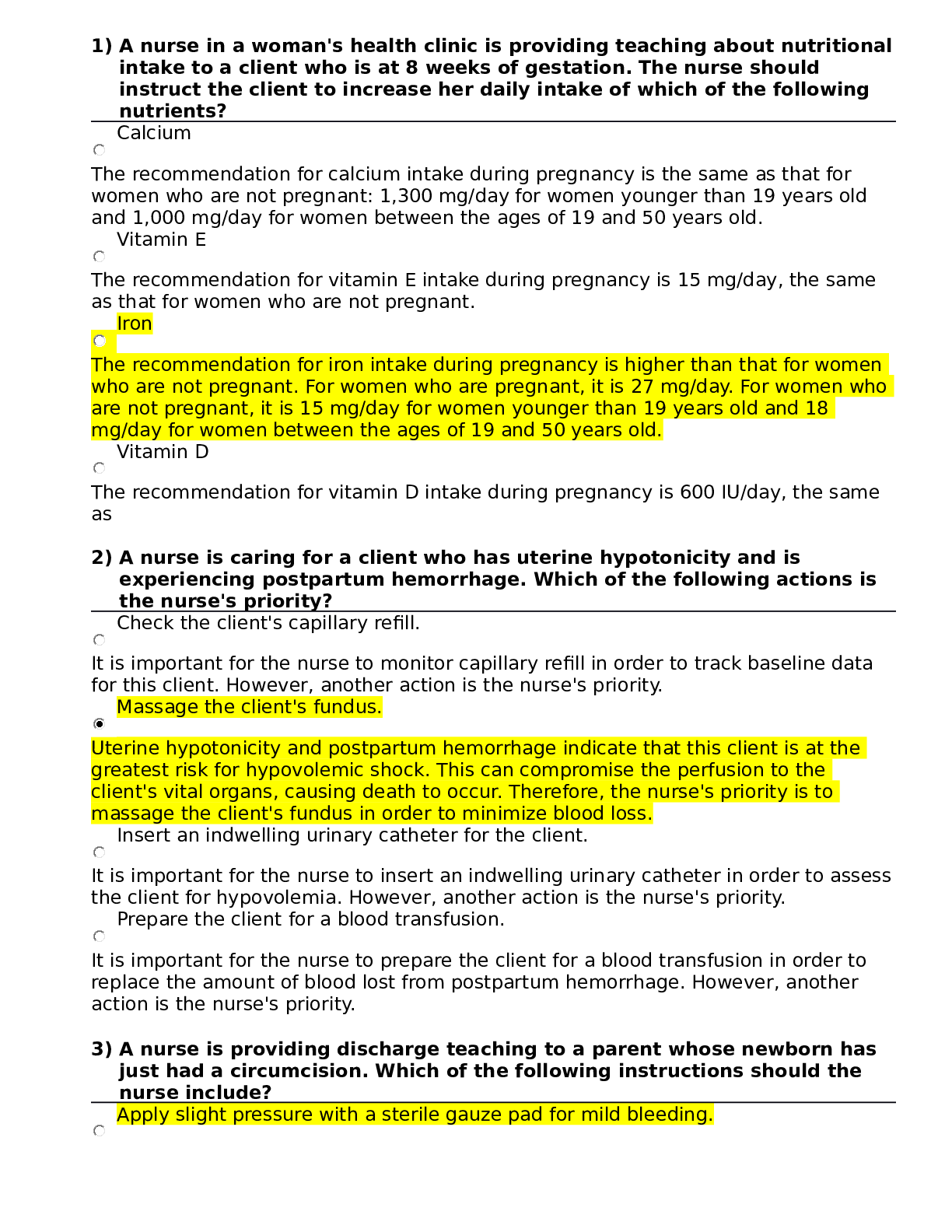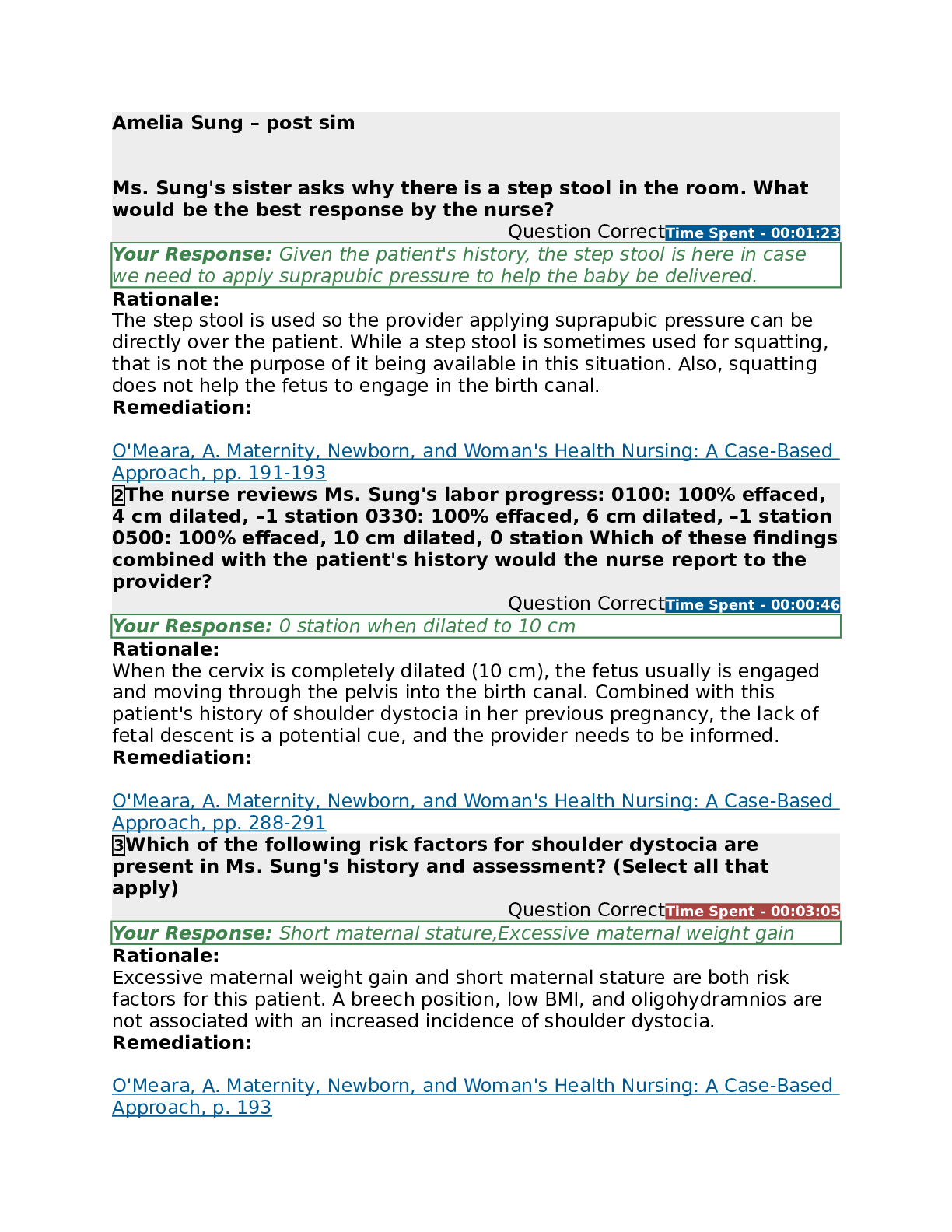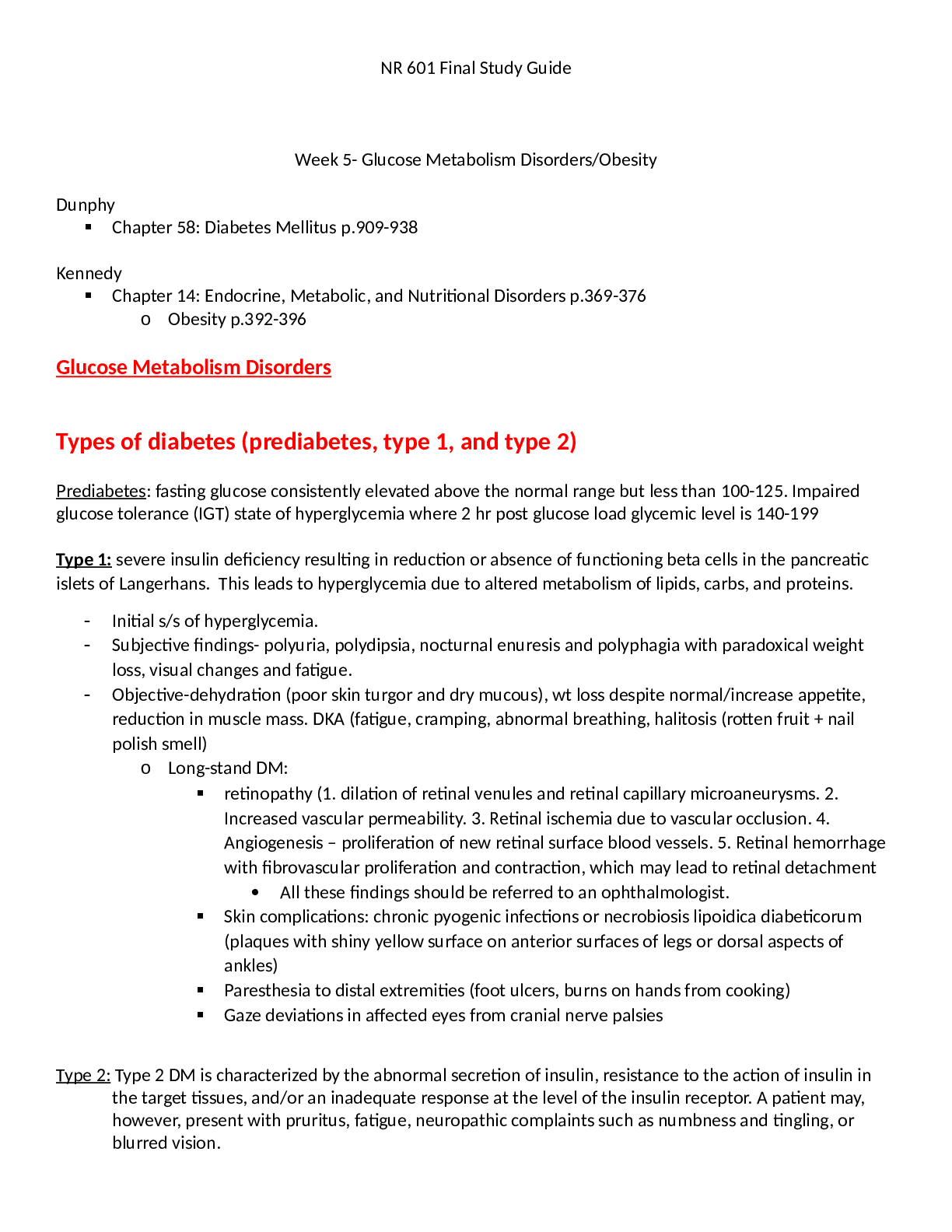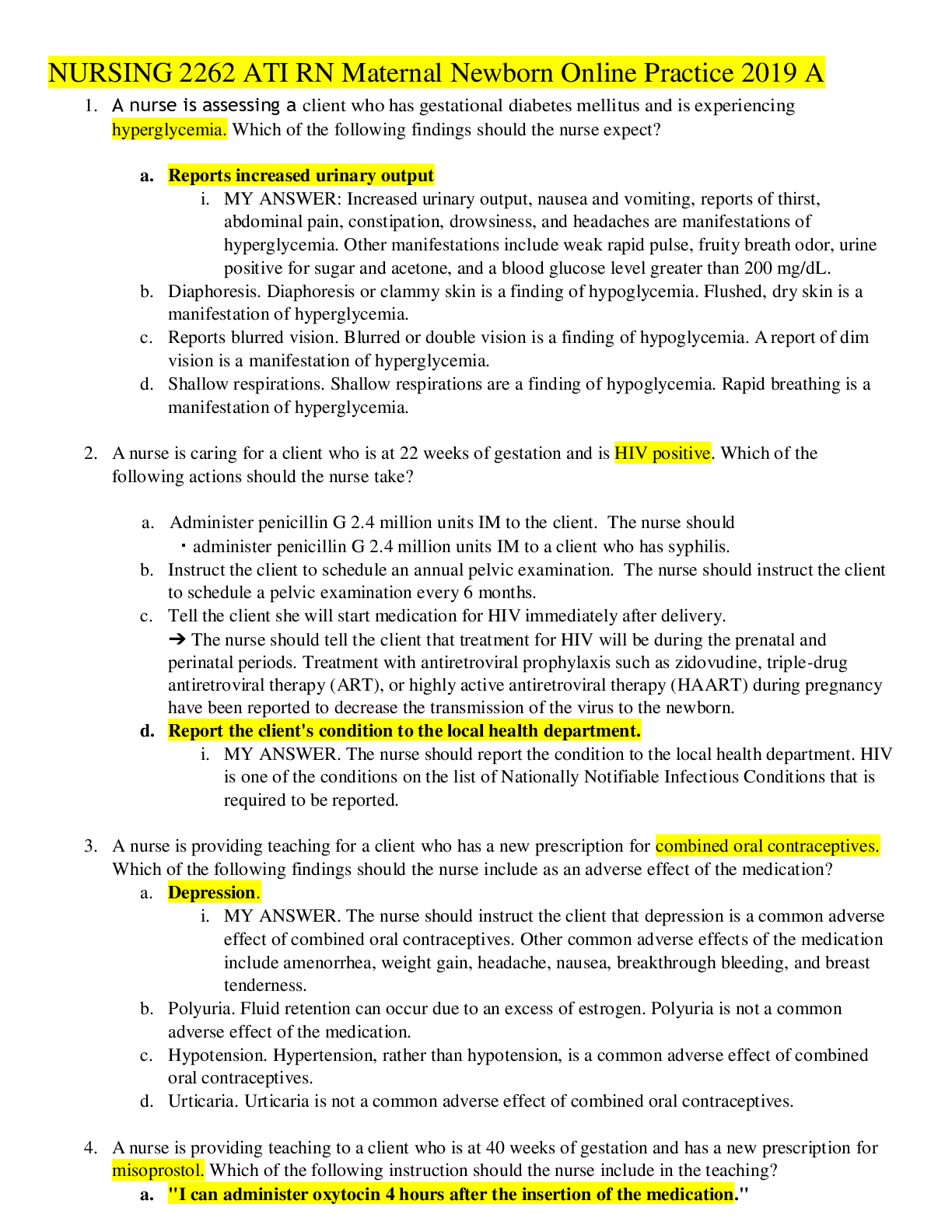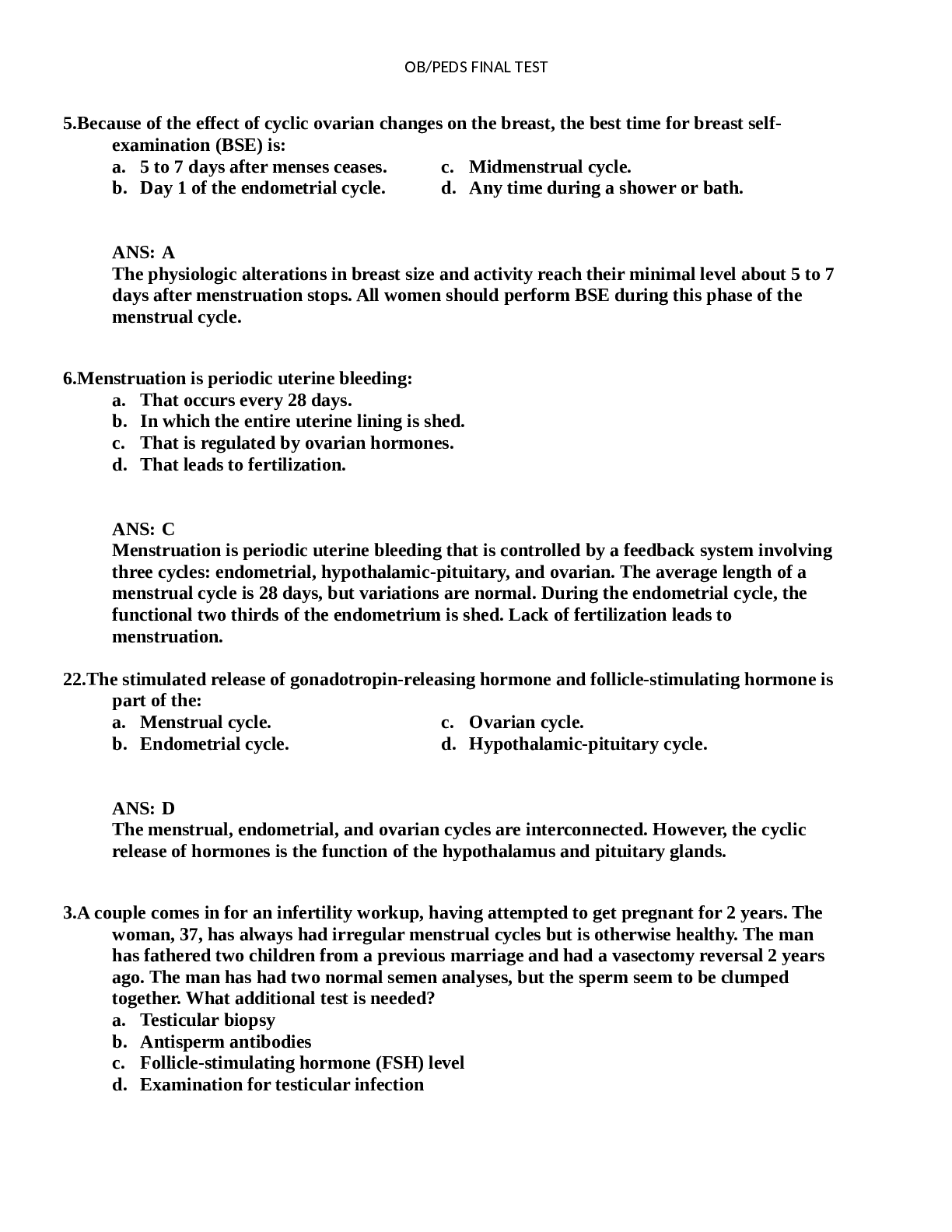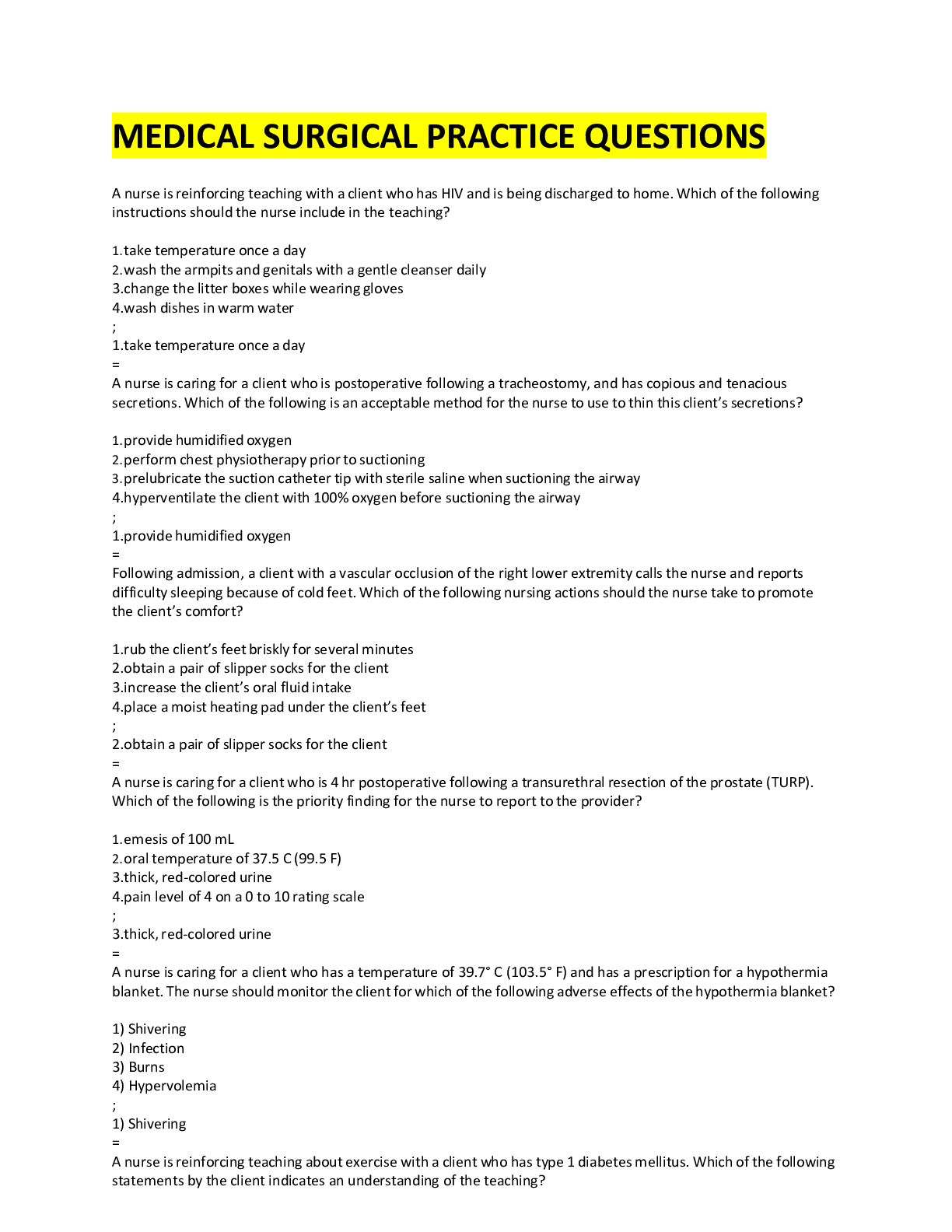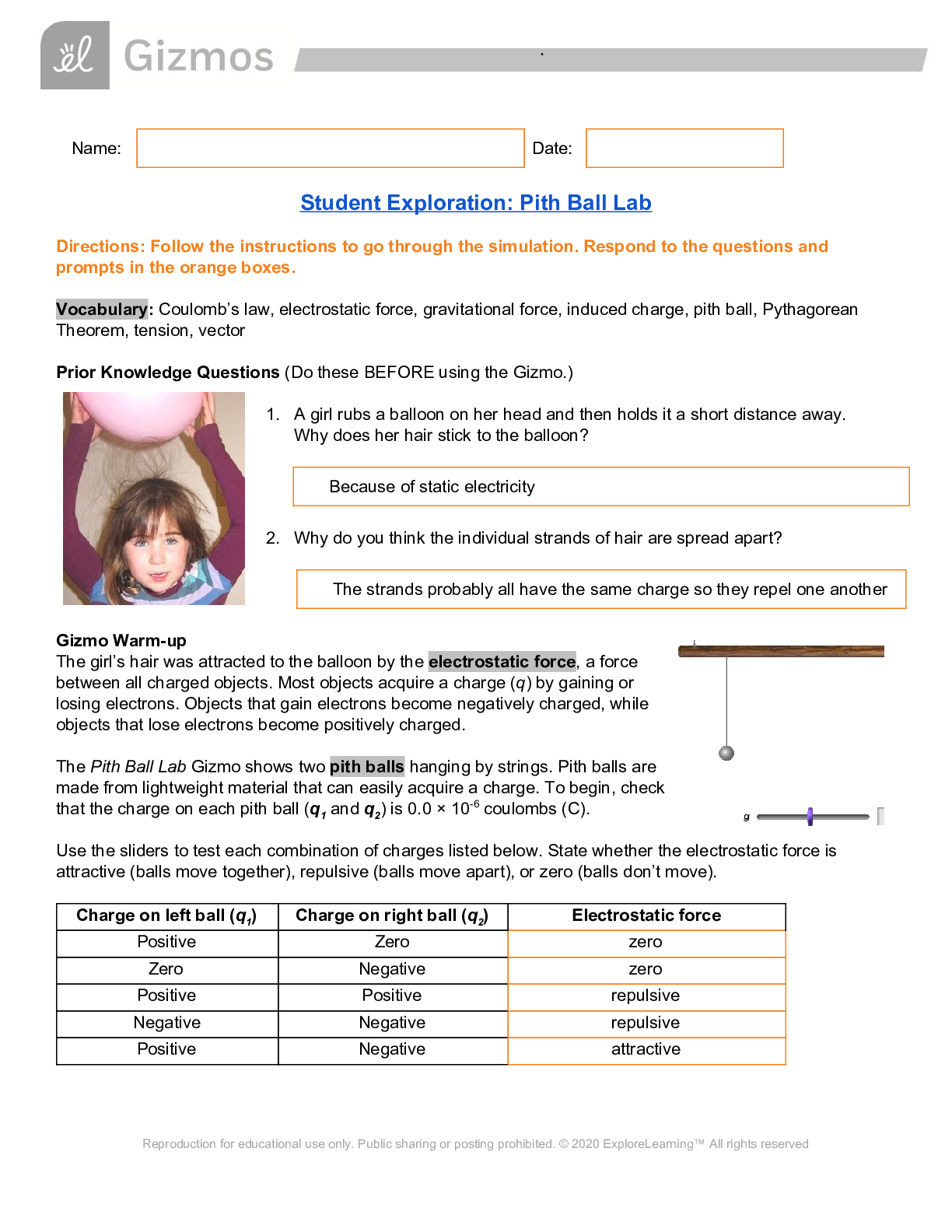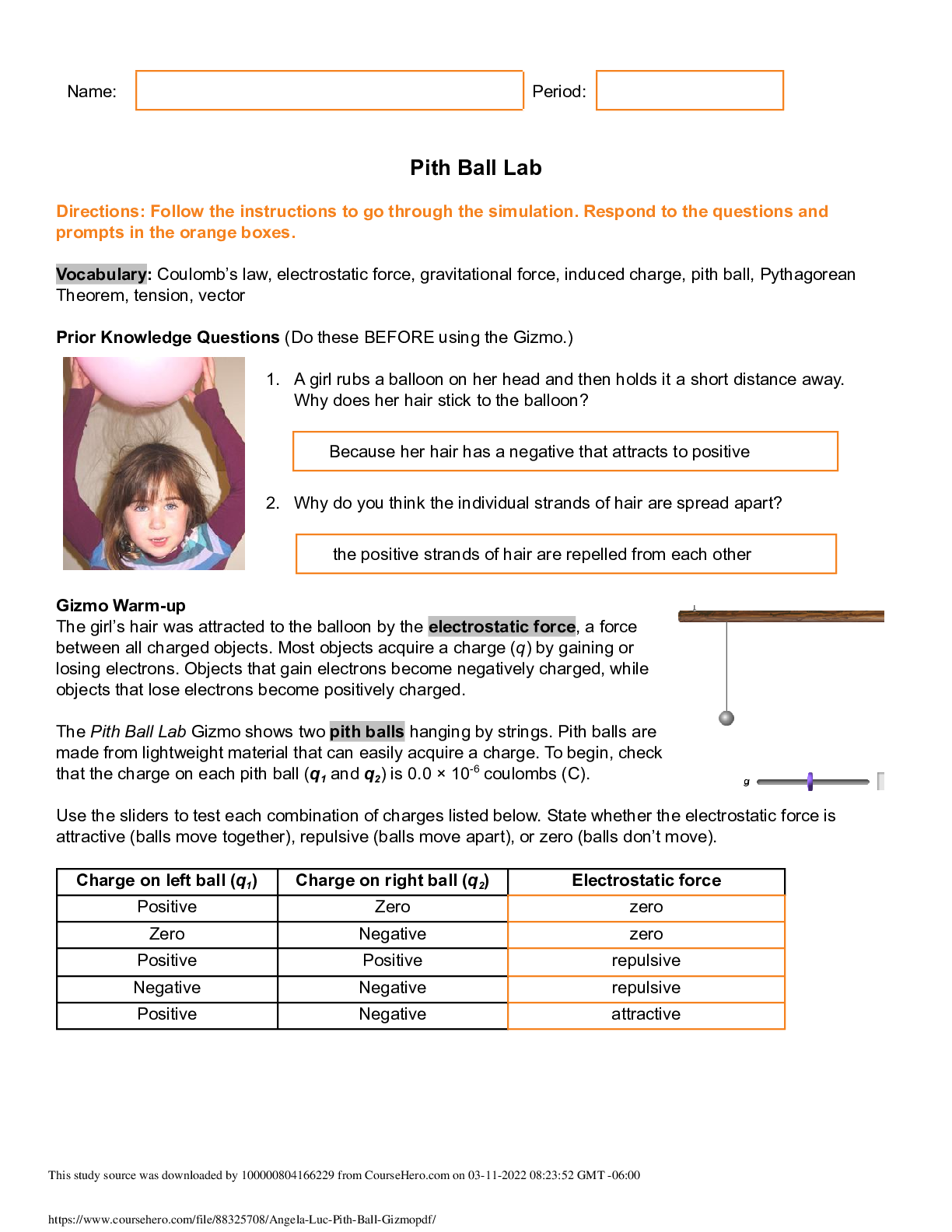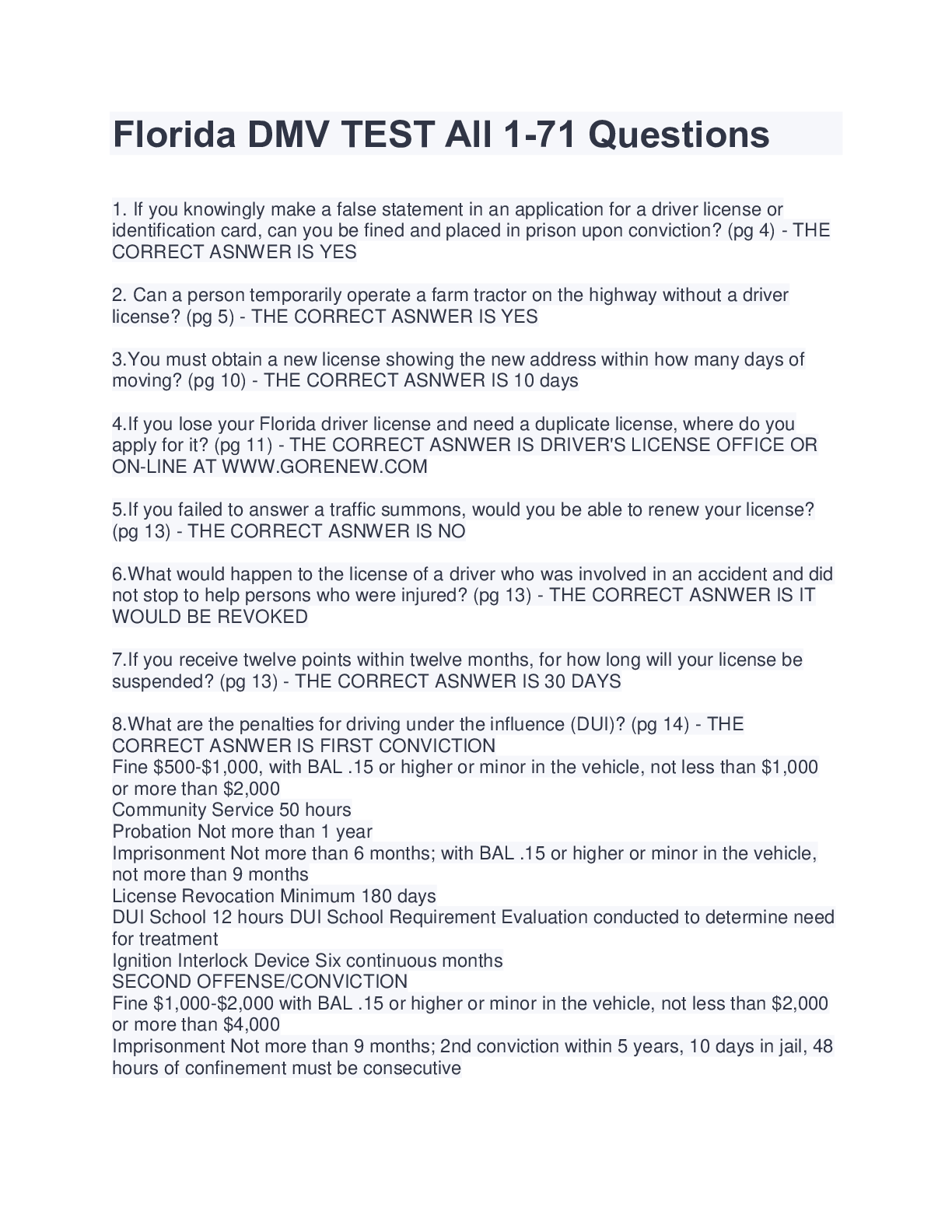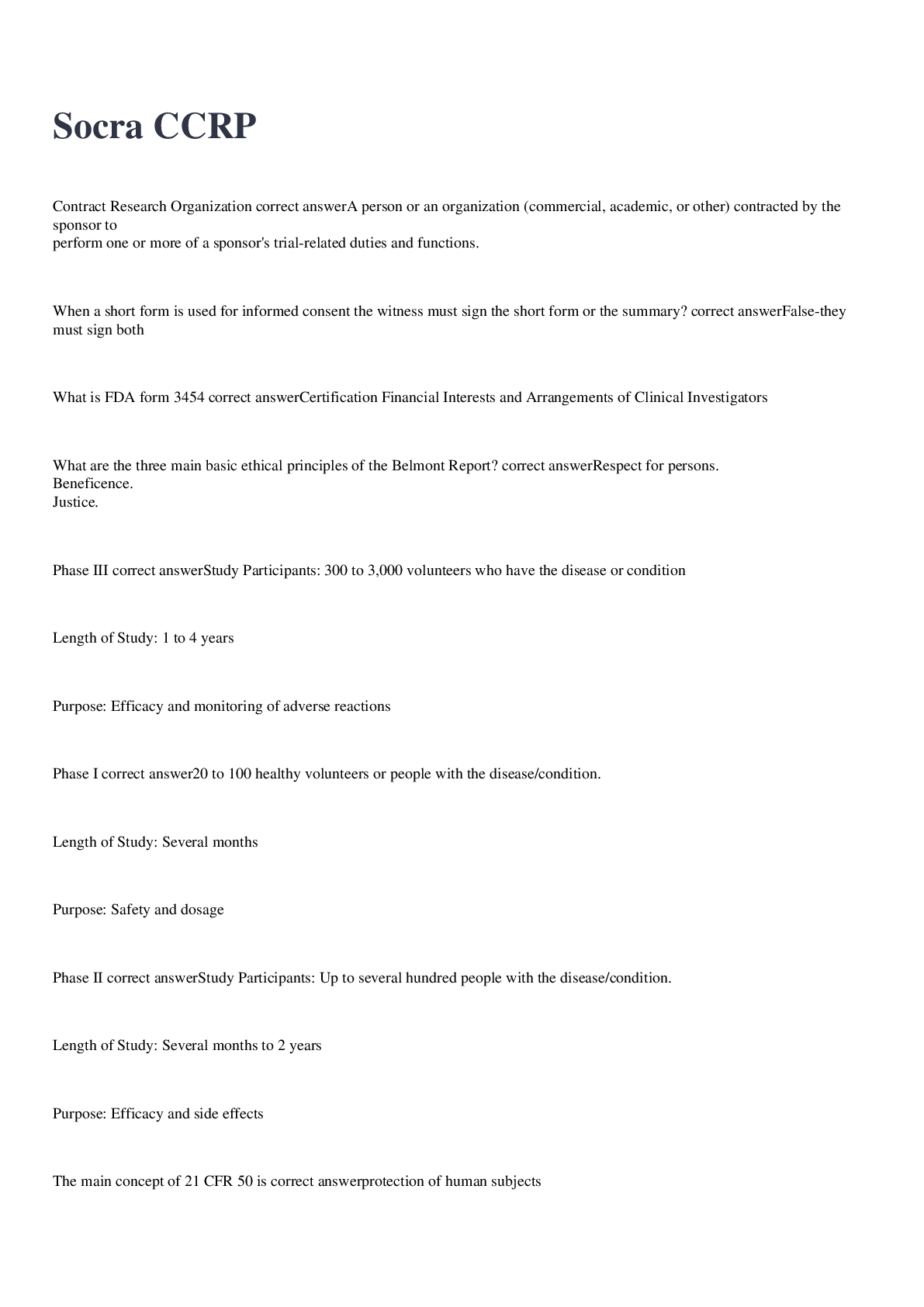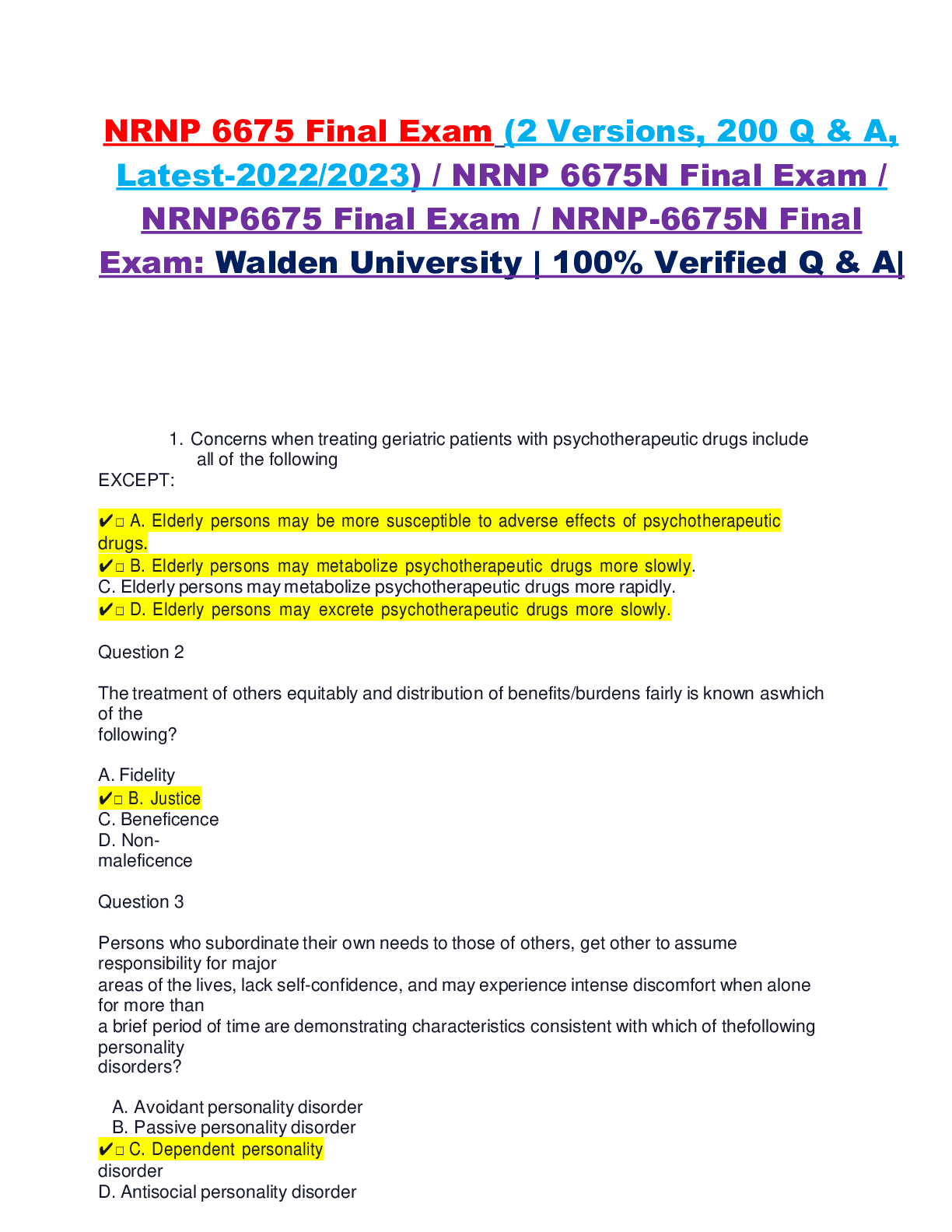Gizmoz; Student Exploration: Pith Ball Lab ( With Complete Solution)
Document Content and Description Below
Name: Leevian Chen Date: November 6th, 2020 Student Exploration: Pith Ball Lab Directions: Follow the instructions to go through the simulation. Respond to the questions and prompts in the orange boxe... s. Vocabulary: Coulomb’s law, electrostatic force, gravitational force, induced charge, pith ball, Pythagorean Theorem, tension, vector Prior Knowledge Questions (Do these BEFORE using the Gizmo.) 1. A girl rubs a balloon on her head and then holds it a short distance away. Why does her hair stick to the balloon? 2. Why do you think the individual strands of hair are spread apart? Gizmo Warm-up The girl’s hair was attracted to the balloon by the electrostatic force, a force between all charged objects. Most objects acquire a charge (q) by gaining or losing electrons. Objects that gain electrons become negatively charged, while objects that lose electrons become positively charged. The Pith Ball Lab Gizmo shows two pith balls hanging by strings. Pith balls are made from lightweight material that can easily acquire a charge. To begin, check that the charge on each pith ball (q and q ) is 0.0 × 10-6 coulombs (C). Use the sliders to test each combination of charges listed below. State whether the electrostatic force is attractive (balls move together), repulsive (balls move apart), or zero (balls don’t move). Charge on left ball (q1) Charge on right ball (q2) Electrostatic force Positive Zero Zero Negative Positive Positive Negative Negative Positive Negative Activity A: Get the Gizmo ready: ● Set q and q to 0.0 × 10-6 C. Coulomb’s law ● Set the mass of the pith balls to 5 grams. ● Check that g is 9.8 m/s2 and L is 0.50 m. Question: What factors affect the force between charged objects? 1. Summarize: Summarize what you have learned so far by filling in the blanks: If the two charges are the same, the force is If the two charges are opposite, the force is If one of the charges is zero, the force is *Note: For simplicity, the Pith Ball Lab Gizmo does not show induced charge. An induced charge occurs when a charged object is brought near a neutral object, causing the electrons in the neutral object to move away from or towards the charged object. This results in an attractive force between the charged object and the neutral object. 2. Predict: How do you think the strength of electrostatic force is related to the charges on the balls and the distance between them? 3. Observe: Set q to -5.0 × 10-6 C. Gradually decrease q below 0.0 × 10-6 C. A. What do you observe? B. What does this tell you about the force between the pith balls? 4. Observe: Now slowly increase q2 above 0.0 × 10-6 C. What do you observe, and what does this tell you about the electrostatic force? 5. Gather data: Turn on Show angle. For each combination of charges in the table below, record the product of the two charges and the resulting angle. (Note: If you like, you can type the charge values directly into the text boxes to the right of each slider and hit “Enter.”) q1 q2 q1 × q2 Angle 6.0 × 10-6 C 4.0 × 10-6 C 8.0 × 10-6 C 3.0 × 10-6 C 16.0 × 10-6 C 1.0 × 10-6 C -4.0 × 10-6 C -4.0 × 10-6 C 6. Analyze: How does the electrostatic force relate to the product of the charges? Explain. 7. Calculate: Coulomb’s law states that the electrostatic force (Fq) between charged objects is equal to a constant k multiplied by the product of the charges divided by the square of the distance between them: Turn on Show geometric dimensions and Show force vectors and magnitudes. Set q1 and q2 to -5.0 × 10-6 C and the mass to 50 grams. A. What is the distance between the pith balls (R)? B. What is the value of the electrostatic force (Fq)? C. Based on the known values, use Coulomb’s law to solve for the proportionality constant, k. Show your work. (Note: The units of k are N·m2/C2.) 8. Apply: Turn off Show force vectors and magnitudes. Choose your own values for q1 and q2 that are between -5.0 × 10-6 C and 20 × 10-6 C. Based on these values and R, calculate the force between the pith balls and write it below. Use the Gizmo to check your answer. q1 Activity B: Pith ball geometry Get the Gizmo ready: ● Set q and q to 0.0 × 10-6 C. 1 2 ● Set the mass of the pith balls to 50 grams. ● Turn off Show geometric dimensions and Show angle. ● Turn on Show force vectors and magnitudes. Introduction: At any time, there are up to three forces acting on the pith balls. The gravitational force (Fg) pulls the pith balls downward. The tension of the string (T) opposes gravity and pulls the pith balls up. You have already learned about the electrostatic force (Fq). Each force is represented by an arrow, or vector. The longer the arrow is, the greater the force. Question: How does tension relate to the electrostatic force and the force of gravity? 1. Observe: Look at the arrows on each pith ball. A. What two forces are affecting the pith balls right now? B. What is the value of each force? C. What would happen if these forces were not equal in magnitude? 2. Gather data: The fact that the balls are stationary indicates that the forces are balanced, or equal in magnitude. Set q and q to 10.0 × 10-6 C. A. What are the values of T, Fg, and Fq? T = B. How does the direction of the tension vector relate to the directions of the Fg and Fq vectors? 3. Calculate: Because Fg and Fq are perpendicular, you can use the Pythagorean Theorem to calculate the combined force of gravity and the electrostatics. A. What is the combined force of gravity and electrostatics (FTotal)? B. How does this force compare to the string tension? 4. Challenge: If you know Fg and Fq, you can calculate the angle of the string (θ). When you have finished your calculation, turn on Show angle to check your answer. Hint: You can calculate the angles of a right triangle using the following trigonometry functions: Fq = (opposite) = 0.302 N θ = tan-1(0.302/0.49) = 31.65° Fg = (adjacent) = 0.49 N 5. Practice: Turn off Show angle and Show force vectors and magnitudes. Turn on Show geometric dimensions. Set q1 and q2 to 15.0 × 10-6 C. The force of gravity on each pith ball is equal to the mass of the ball (in kilograms) multiplied by gravitational acceleration (g). In the space below, calculate Fg, Fq, T, and θ. Show your work. (Hint: To convert a mass in grams to kilograms, divide by 1,000.) When you have finished your calculation, turn on Show angle and Show force vectors and magnitudes to check your answer. Fg = mg = 0.050x9.8 = 0.49 N Fq = k ((q1q2)/R2) = 8.98x109 ((15.0 × 10-6)2/1.942) = 0.537 N T = √(Fg2+Fq2) = √(0.492+0.5372) = 0.727 N θ = tan-1(0.537/0.49) = 47.62° Activity C: Get the Gizmo ready: ● Set q and q to 8.0 × 10-6 C. Exploring variables 1 2 ● Set the mass of the pith balls to 50 grams. ● Check that g is 9.8 m/s2 and L is 0.50 m. Question: What factors affect the angle of the pith balls? 1. Observe: If necessary, turn on Show angle. What is the current value of θ? 2. Predict: Predict the effect of each change on the angle of the pith balls (θ). Fill in each blank with either “θ increases” or “θ decreases.” Explain each of your predictions. A. g increases: g decreases: B. Mass increases C. Length (L) increases: L decreases: 3. Test: Use the Gizmo to test each of your predictions. Write your results below. A. g increases: g decreases: B. Mass increases: Mass decreases: C. L increases: L decreases 4. Interpret: How is increasing the mass of the pith balls similar to increasing the value of g? 5. Think and discuss: Why does increasing the length of the string cause the angle of the pith balls to decrease? (Hint: Why wouldn’t you expect the angle to stay the same?) [Show More]
Last updated: 1 year ago
Preview 1 out of 6 pages
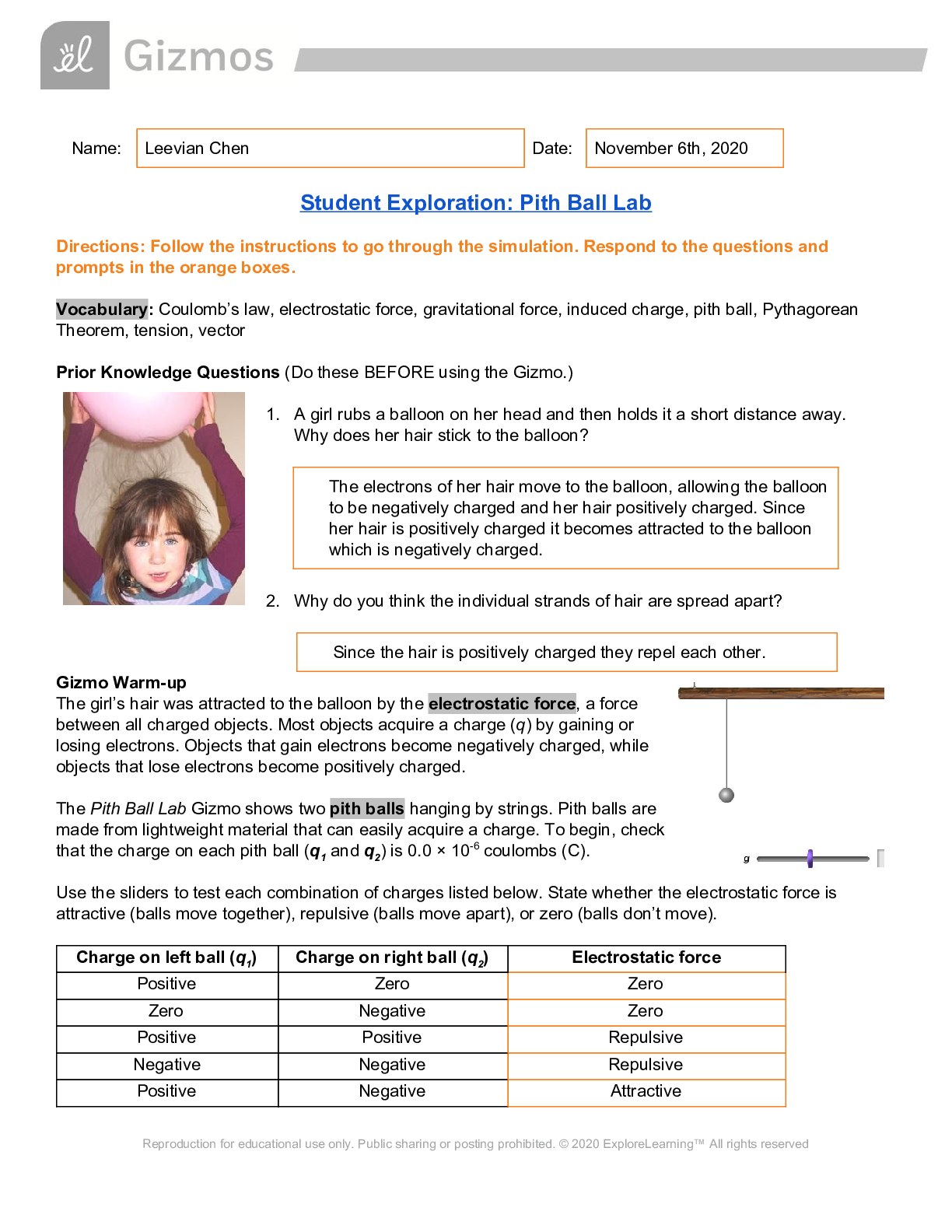
Reviews( 0 )
Document information
Connected school, study & course
About the document
Uploaded On
Mar 10, 2022
Number of pages
6
Written in
Additional information
This document has been written for:
Uploaded
Mar 10, 2022
Downloads
0
Views
90

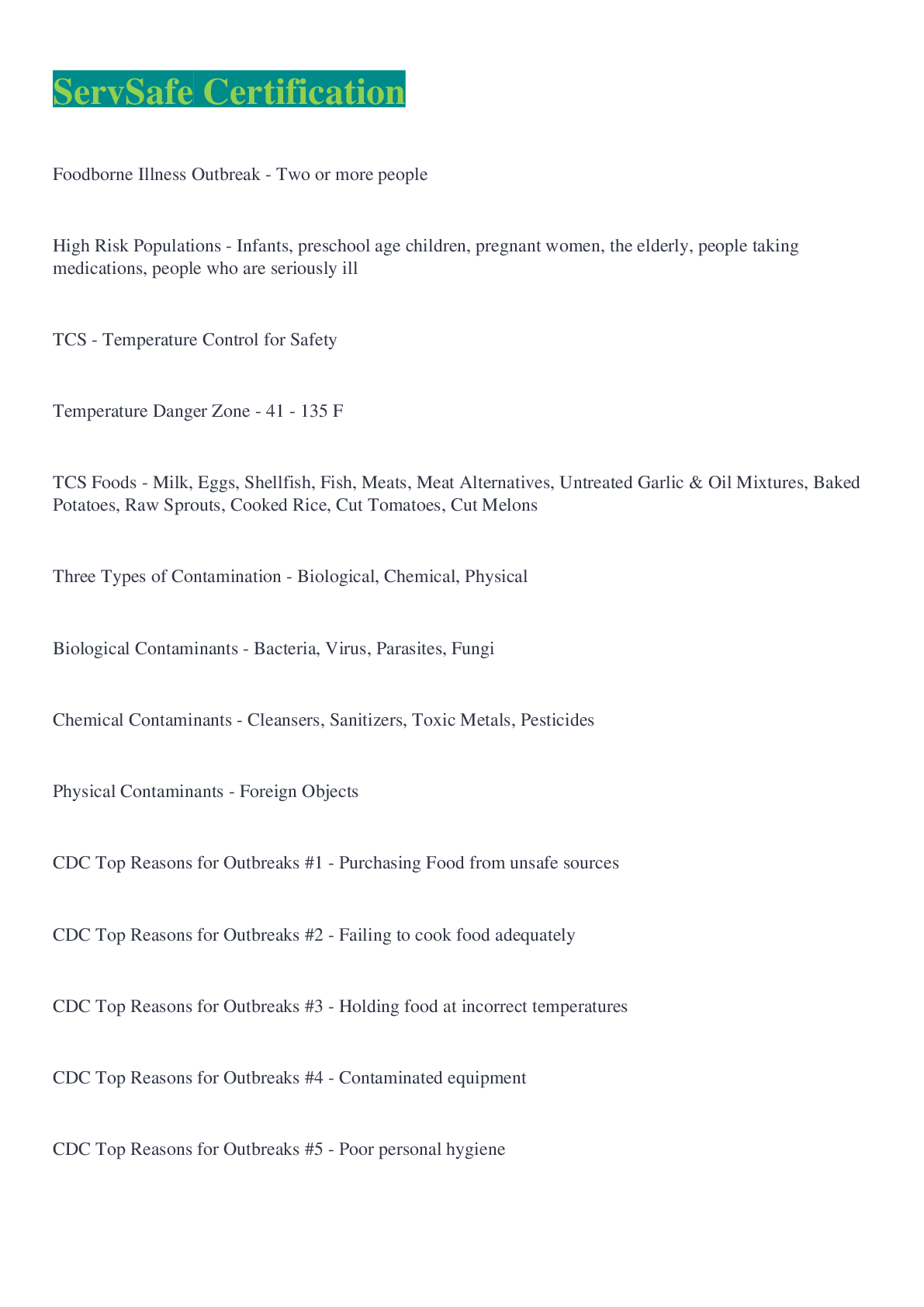
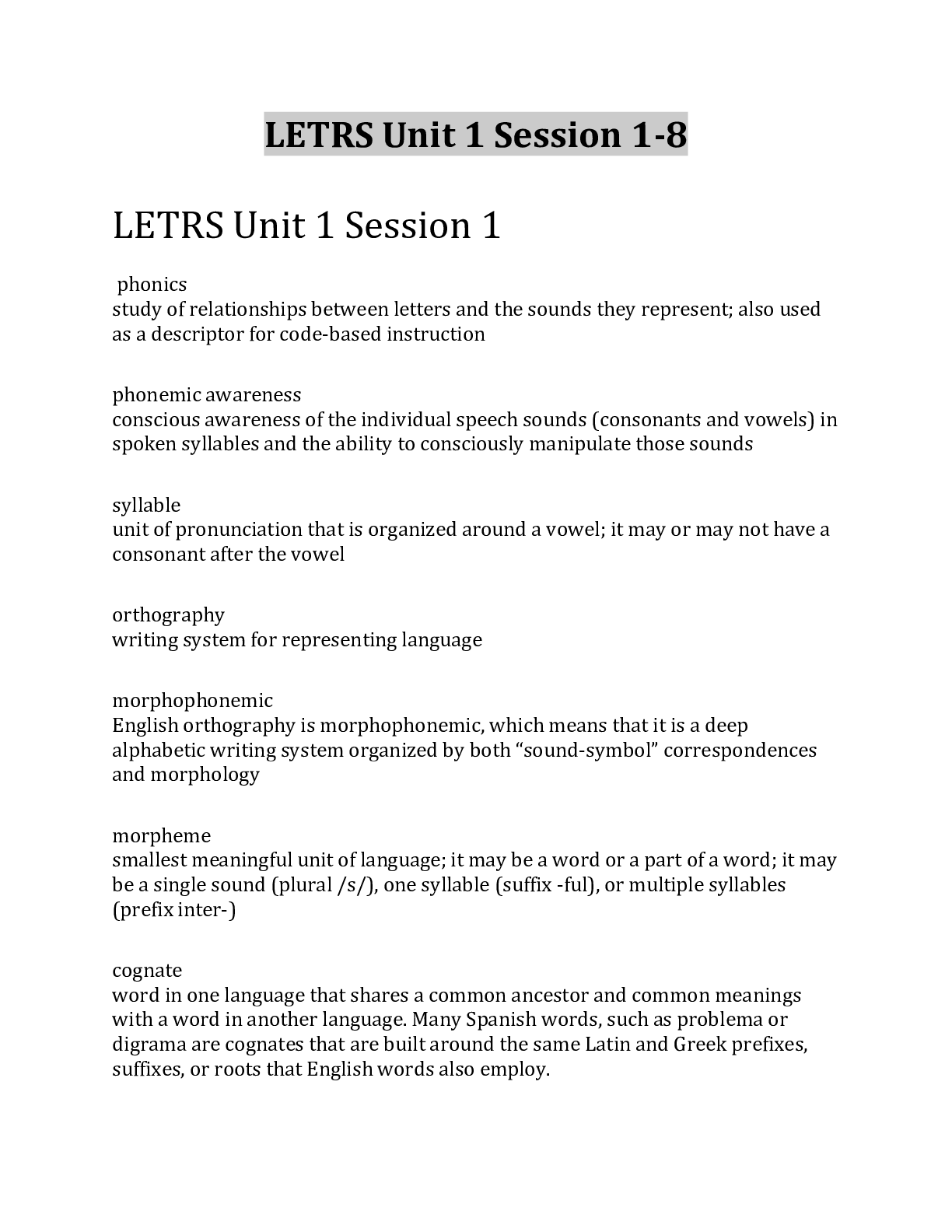

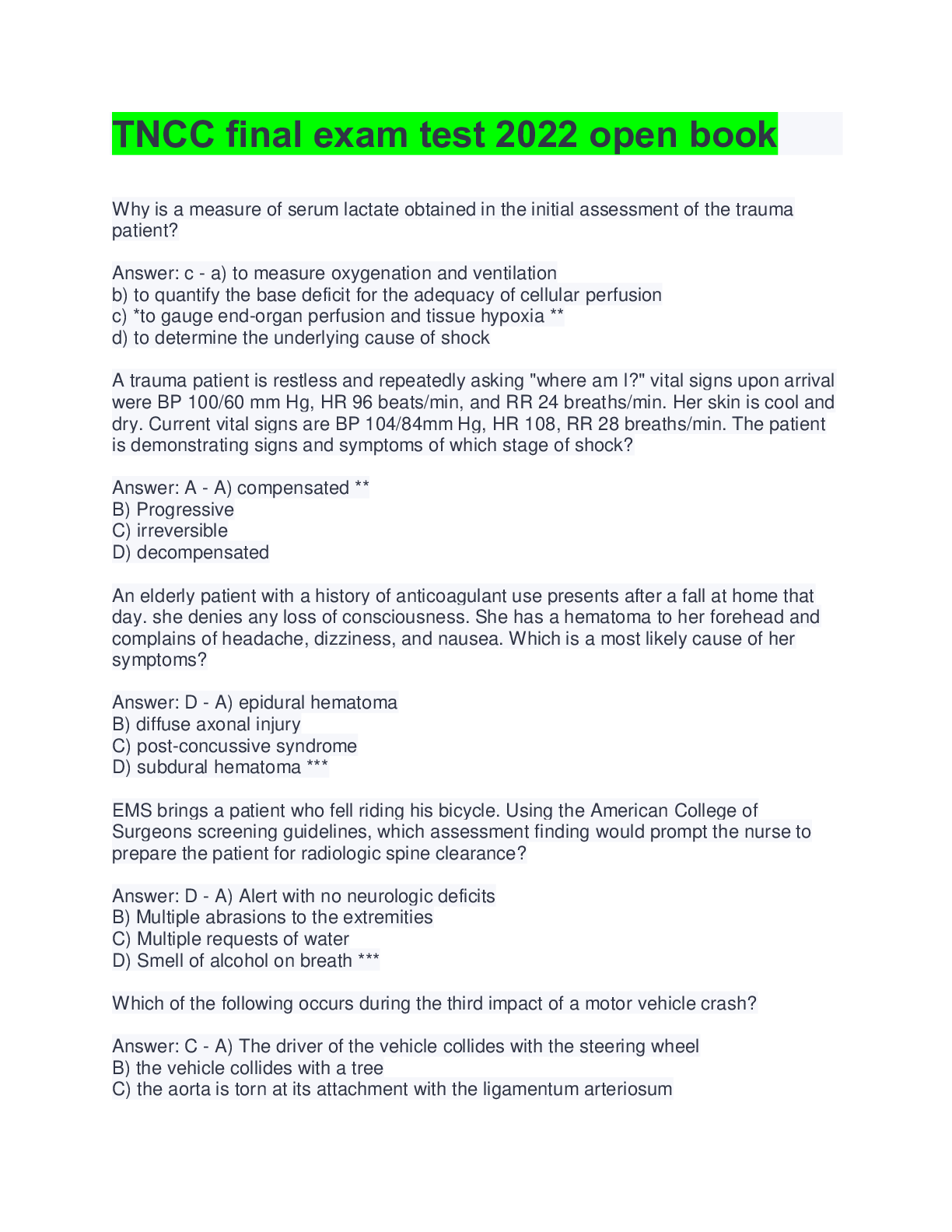
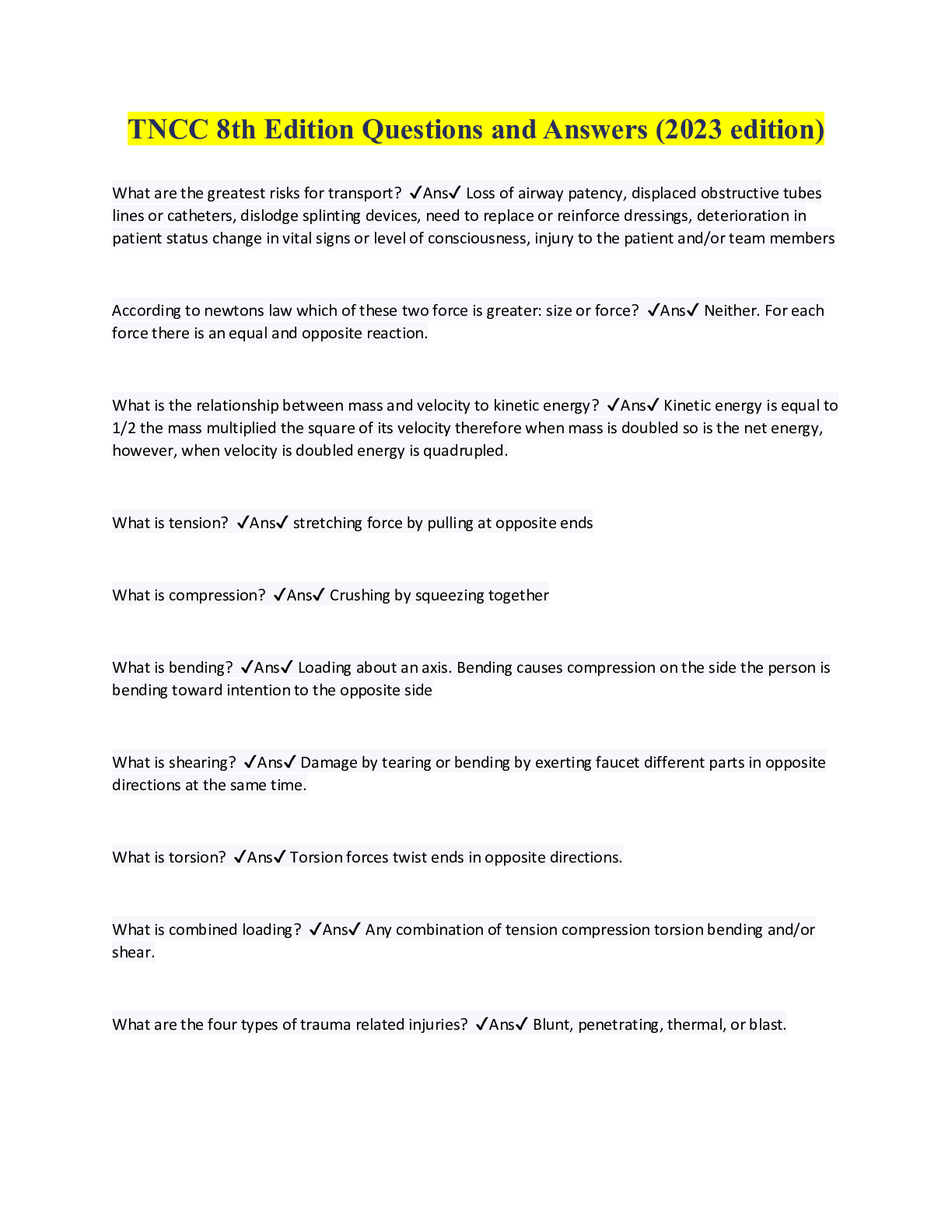
.png)
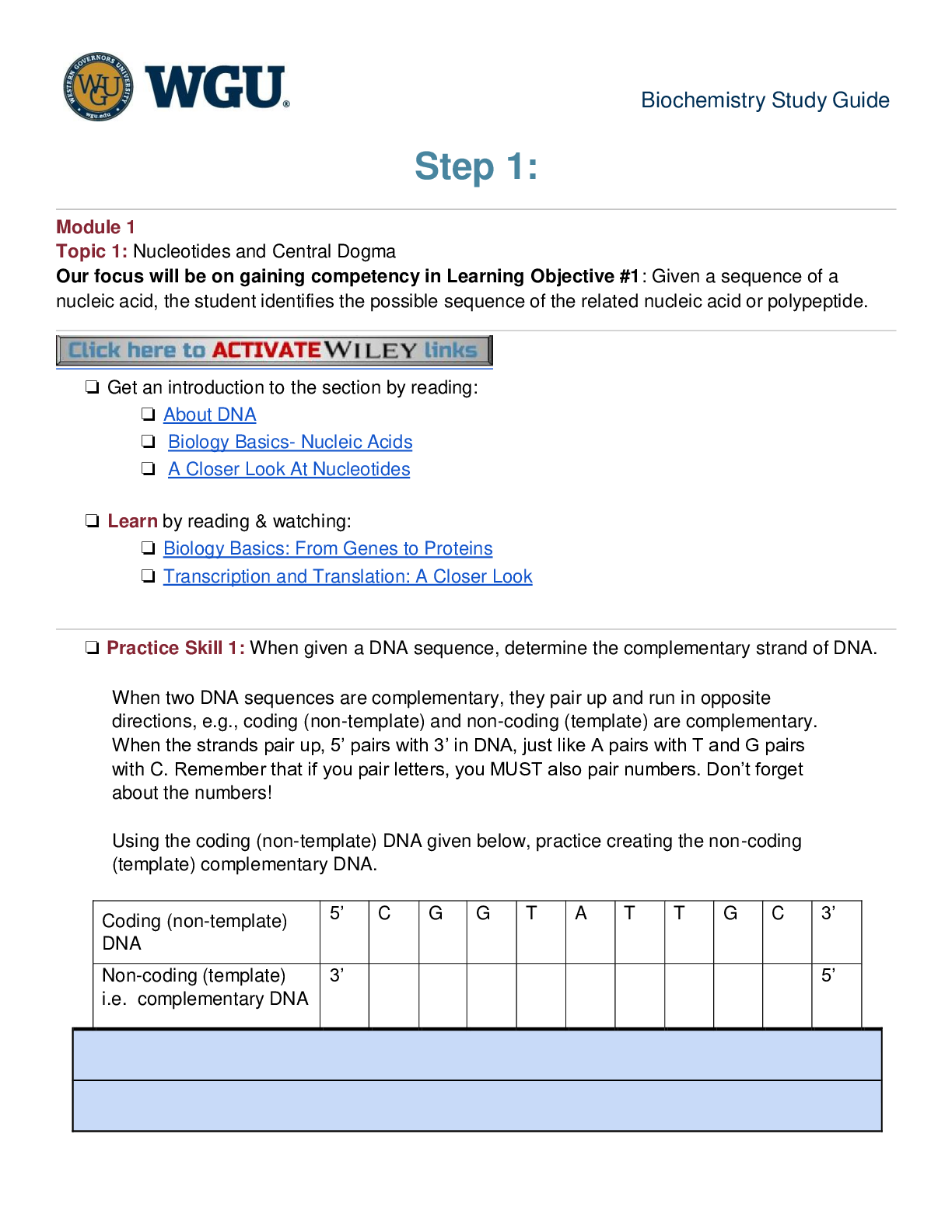
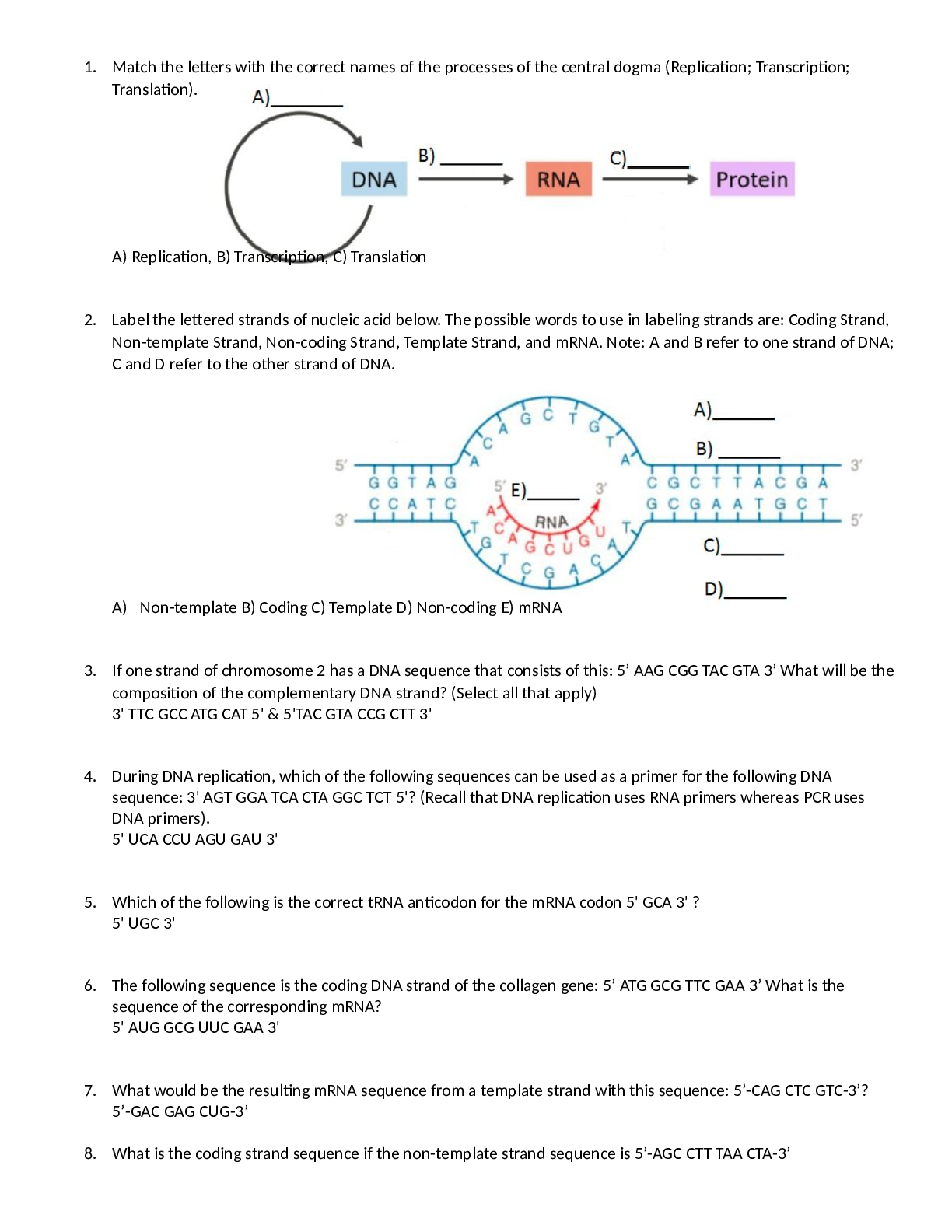
.png)
